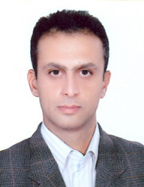
Phillip Rogaway
professor of Department of Computer
Science
University of California, Davis, USA
Title: Constructing Cryptographic Definitions
Abstract: As much as new protocols or technologies,
definitions shape the landscape of modern cryptography. We describe how
cryptographic definitions arise and evolve, and why they are so crucial, giving
examples and perspectives. Definitions I will discuss include notions for
collision-resistant hashing, entity authentication, and garbled circuits. An underlying finding is that definitions in
cryptography are very much constructed—inventions that reflect our imagination
and disciplinary culture more than discoveries that capture the underpinnings of
an objective reality.
Biography: Professor Phillip Rogaway is a
cryptographer at the University of California, Davis. He did his undergraduate
at UC Berkeley and his Ph.D. at MIT. He next worked at IBM as a Security
Architect, where he became interested in the problem of developing a theory for
cryptography that would be useful, and used, for actual cryptographic
practice. In a body of work done in
large part with Mihir Bellare, Rogaway developed what has been called
“practice-oriented provable security.” For this body of work Rogaway is the
recipient an ACM Kanellakis Theory and Practice Award. More than 14,000 papers
reference Rogaway’s academic work, and standardized cryptographic schemes that
he co-invented include CMAC, DHIES, EME, OAEP, OCB, PSS, UMAC, and XTS.
Interested in social and ethical issues surrounding technology, Rogaway
regularly teaches a class on this subject. Prof. Rogaway recently completed his
work as Program Chair for CRYPTO 2011.
Time: September 14, 2011 – 10 – 11 AM
Present Language: English

مهران سليمان فلاح
دانشيار گروه مهندسي کامپيوتر و فناوري
اطلاعات
دانشگاه صنعتي اميرکبير - ايران
عنوان: امنيت زبان ـ مبنا: نتايج و چالشها
چکيده: ديرزماني است که از روشهاي صوري در تحليل و طراحي سيستمهايي
که از نظر امنيت حساس هستند استفاده شده است. طيف گستردهاي از چنين روشهايي از
روشهاي بسيار قوي، ولي دشوار براي به کارگيري، تا روشهاي سبکوزن وجود دارد.
امنيت زبان ـ مبنا در برگيرنده دستهاي از روشها است که بيشتر در انتهاي سبک طيف
قرار دارند. امنيت زبان ـ مبنا را ميتوان دانش و علم روشها و مکانيزمهاي طراحي
و پيادهسازي زبانهاي برنامهسازي با رويکرد اعمال و تحليل خط مشيهاي امنيتي
دانست. ارائه خردمندانه سيستمهاي نوع، مکانيزمهاي بازنويسي، و سيستمهاي زمان
اجرا به منظور اعمال خط مشيهاي امنيتي در بين عنوان هاي پژوهشي اين حوزه هستند.
اين حوزه، همچنين، دستاوردهاي مهمي در تحليل پروتکلهاي امنيتي داشته است. اين
سخنراني به امنيت زبان ـ مبنا، دستاوردهاي آن، چالشها، و پژوهش آينده در اين حوزه
ميپردازد.
بيوگرافي: مهران سليمان فلاح دانشيار مهندسي کامپيوتر و فناوري
اطلاعات در دانشگاه صنعتي اميرکبير است. او، پس از دريافت درجه دکتري بر روي توصيف
صوري قابليت دسترسي و ممانعت از خدمات در شبکههاي کامپيوتري از دانشگاه تربيت
مدرس، حدود 10 سال است که پژوهش و تدريس خود را در زمينه امنيت اطلاعات ادامه داده
است. در بين سالهاي 2004 تا 2009 ميلادي، او در حال انتقال به موضوعات تحقيقاتي
جديد بوده است. علاوه بر امنيت اطلاعات و روشهاي صوري، پژوهش را در تحليل و طراحي سيستمهاي محاسباتي بر مبناي
نظريه بازيها، به خصوص سيستمهاي امن، و نيز مباني زبانهاي برنامهسازي، که پايه
اصلي در طراحي نرمافزار امن است، دنبال کرده است. مقالههاي اخير او بيشتر در
حوزه امنيت زبان ـ مبنا است.
زمان: پنجشنبه 24 شهريور 1390 – ساعت 9:30 – 8:30
زبان سخنراني: فارسي

